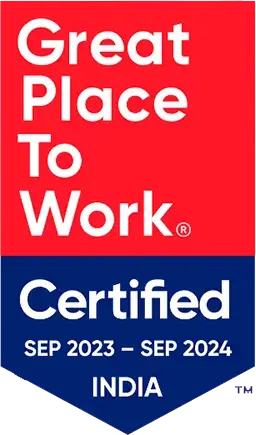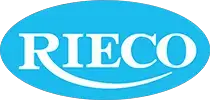- Industries
- Solutions
- Products
- Our Company
- Knowledge
- Contact Us

How to Read ATEX Ratings: Decoding the Display of ATEX Certification (Part 2)

ATEX certification is a crucial requirement for companies operating in hazardous environments. It is a mandatory certification that applies to all equipment used in potentially explosive atmospheres in the European Union. In our previous blog, we discussed the requirements for ATEX certification in the mechanical industry.
In this blog, we will explore the different aspects of ATEX certification, including Directives, Zone Classification, Temperature Range, Levels of Protection, and how ATEX rating is displayed. We’ll break down each of these concepts and provide you with a comprehensive understanding of ATEX certification to help ensure your workplace is compliant and safe.
The ATEX directive is based on a nomenclature system that defines the different types of equipment and their corresponding risk levels.
The nomenclature is as follows:
| ATEX 100a | Use in explosive gas atmospheres. |
| ATEX 100b | Use in explosive dust atmospheres. |
| ATEX 135 | Use in explosive gas and dust atmospheres. |
| ATEX 137 | Use in explosive gas and dust atmospheres with a high potential of fire and explosion. |
| ATEX 138 | Use in explosive gas and dust atmospheres with a very high potential of fire and explosion. |
| ATEX 142 | Use in explosive gas and dust atmospheres with a low potential of fire and explosion. |
| ATEX 143 | Use in explosive gas and dust atmospheres with a medium potential of fire and explosion. |
The ATEX Directive covers explosions from flammable gas/vapours and combustible dust/fibres.
The following are classifications for zones that can produce explosive atmospheres.
The following zones are each defined as a place in which an explosive atmosphere consisting of a mixture with air of dangerous substances in the form of gas, vapor, or mist.
| Category | Probability of an explosive atmosphere | Level of protection | Corresponding Zone |
|---|---|---|---|
| 1 | Continuously present or for long periods of time | Very high level of protection | Zone 0 |
| 2 | Likely to occur | High level of protection | Zone 1 |
| 3 | Not likely to occur, and only for short periods of time | Normal operation | Zone 2 |
These are defined as a place in which an explosive atmosphere in the form of a cloud of combustible dust in air.
| Category | Probability of an explosive atmosphere | Level of protection | Corresponding Zone |
|---|---|---|---|
| 1 | Continuously present or for long periods of time | Very high level of protection | Zone 20 |
| 2 | Likely to occur | High level of protection | Zone 21 |
| 3 | Not likely to occur, and only for short periods of time | Normal operation | Zone 22 |
Dusts are divided in subgroups because of types of dust:
| Dust group | Types of dust | Representative dust | |
|---|---|---|---|
| IIIC | Conductive dusts | Graphite Powder, Toner | |
| IIIB | Non-conductive dusts | Milk Powder, Powdered Sugar | |
| IIIA | Fibres and Flyers | Tobacco, Saw Dust |
A mixture of air and flammable gases may ignite if it comes in contact with a hot surface. An intensity of ignition depends on surface area, temperature, and the concentration of the gas. Equipment is tested for maximum surface temperature and assigned a temperature class as follows:
| Temp. class | Temperature |
|---|---|
| T6 | 85 °C |
| T5 | 100 °C |
| T4 | 135 °C |
| T3 | 200 °C |
| T2 | 300 °C |
| T1 | 150 °C |
| Level of protection | Safety level | ||
|---|---|---|---|
| a | Very high | ||
| b | High | ||
| c | Normal |
| Grouping | Suitable for Gases (II) | Suitable for Dusts (III) | |
|---|---|---|---|
| C | Most easy ignitable | Conductive | |
| B | Easy ignitable | Non-conductive | |
| A | Ignitable | Ignitable Fibres & Flying’s |
The ATEX Product Directive requires relevant equipment and protective systems to be marked with the CE mark, the ‘Ex’ mark, together with a series of equipment coding.
Example, picture below for mechanical equipment is marked as follows.

The above picture is an example of mechanical equipment (not for mining) for dusty atmospheres (Group III, subgroup IIIB), protection principle: constructional safety, maximum surface temperature 110°C, and an equipment protection level of noise (i.e., for use in zone 21 & 22).
In conclusion, ATEX certification is a complex yet essential requirement for companies operating in hazardous environments. Understanding the various aspects of ATEX certification is critical for ensuring compliance and safety in the workplace. Armed with this knowledge, businesses can take the necessary steps to obtain ATEX certification and ensure that their operations are safe and compliant.
We hope that this blog has been informative and helpful in demystifying the various aspects of ATEX certification. Rieco can provide ATEX certified products to its customers. Want to know more?
Write us at [email protected]

